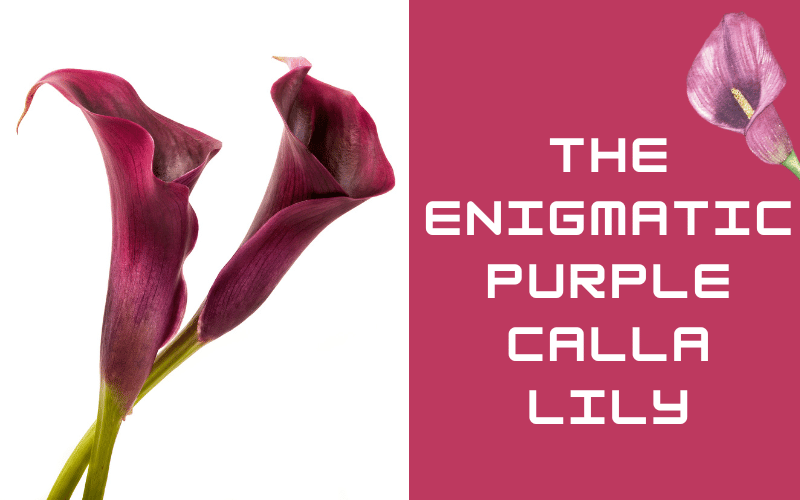Purple Calla Lily is a beautiful flower with deep purple colors. Originally from Southern Africa, it prefers moist soil and flowers from late spring to early summer, with trumpet-shaped flowers and arrow-shaped leaves. People grow it for its beauty, and its royal color represents purity and success. You may even plant it in pots! Simply water it well, fertilize it properly, and protect it from the cold in the winter. The Purple Calla Lily is more than just a flower; it represents beauty and leaves a lasting impression in gardens and bouquets all over the world.
Flower Name and Taxonomy:
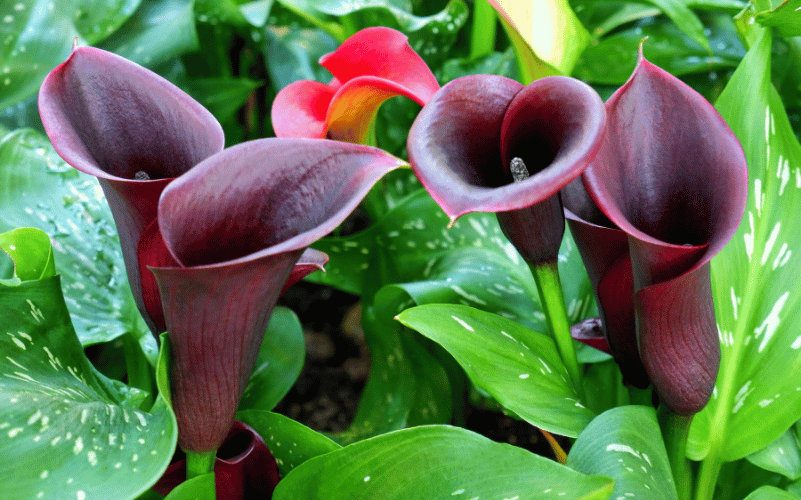
The Purple Calla Lily, scientifically known as Zantedeschia, belongs to the Araceae family. This family has plants with unique flowers, including calla lilies, philodendrons, and anthuriums. The family name “Zantedeschia” honors Italian botanist Giovanni Zantedeschi.
In the world of Zantedeschia, there are many kinds and mixtures, each with unique characteristics. The Purple Calla Lily, with its strong and appealing deep purple color, has gained popularity for its stunning beauty.
Native Habitats:
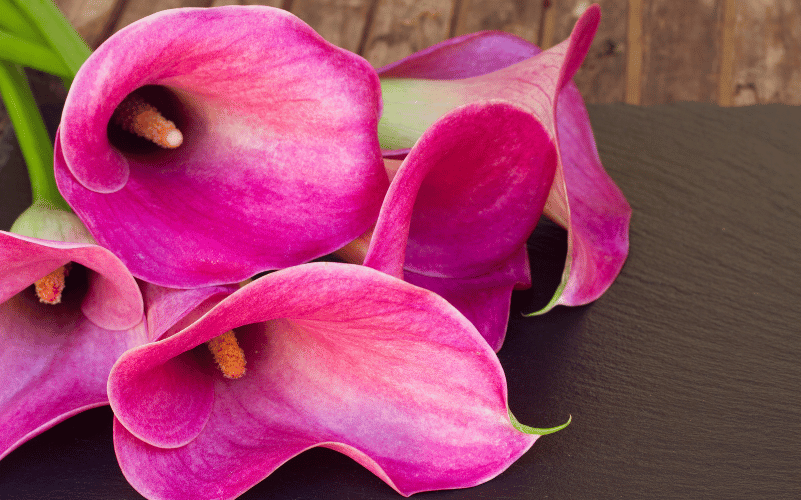
The Purple Calla Lily comes from southern Africa, particularly South Africa, Lesotho, and Swaziland. It likes to live in climates with moderate temperatures and enough rainfall. These lilies are frequently found in locations with wet, nutrient-rich soil, such as marshes, swamps, or near pond edges.
Knowing where the Purple Calla Lily originally comes from helps us understand how to take care of it. If we want to grow these lilies ourselves, we should try to create similar conditions to what they have in their natural homes. This way, the plant will be healthy and happy.
Colors and Bloom Time:
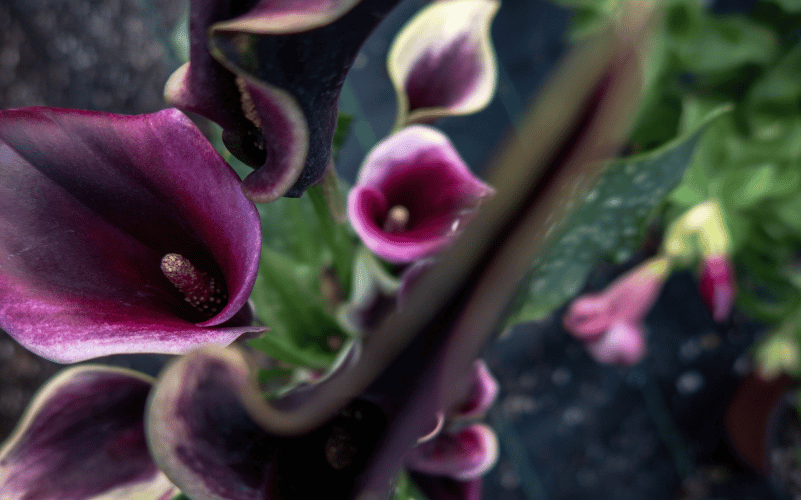
The special thing about the Purple Calla Lily is its beautiful color. Just like its name suggests, the flowers come in different shades of purple, like deep violet, lavender, and lilac. This variety of colors makes it a popular choice for gardens and flower arrangements.
The Purple Calla Lily usually blooms from late spring to early summer. That’s when the plant shows off its vibrant colors, turning the surroundings into a stunning display of purples. The exact timing can depend on things like where the plant is growing and the weather, but generally, you can expect this burst of color during the warmer months.
Soil Type and Growing Conditions:
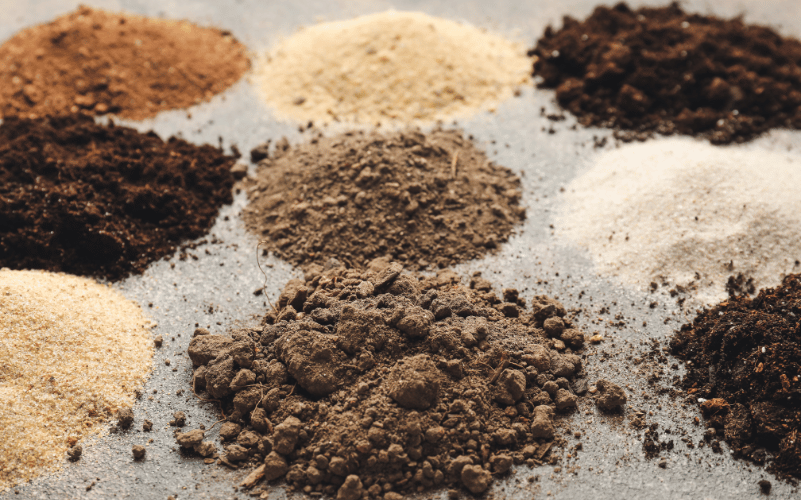
For the Purple Calla Lily to grow well, you need to make its environment like where it naturally grows. These flowers prefer soil that lets water pass through easily and is rich in nutrients. Mixing in compost, which is decomposed organic stuff, with slightly acidic to neutral soil is best for their growth. Keeping the soil consistently moist, especially when they are growing, is very important.
Although the Purple Calla Lily can tolerate some shade, it’s a good idea to let it get some sunlight too. Too much shade can make the stems stretch out and reduce the number of flowers. By making sure it gets the right conditions with good soil, moisture, and a bit of sunlight, you’ll have strong, leafy plants with lots of beautiful blooms.
Size and Structure:

The Purple Calla Lily looks nice because it’s not too big, usually growing to 1 to 3 feet tall. It’s good for gardens and pots. The leaves are shaped like arrows and make a rich background for the pretty flowers. To help it grow well, mix in some fertilizer, which is just broken-down organic stuff, with slightly acidic to neutral soil – not too sour or too basic.
Knowing how big and structured the Purple Calla Lily gets is important for planning a garden. Giving it enough space and thinking about its height makes the garden look better and stops it from being too crowded.
Medicinal Uses:

While people mostly grow calla lilies for their beauty, there are some stories from the past suggesting they might have been used for medicine. But we need to be careful with this information because traditional uses might not have been proven by science. It’s a good idea to talk to a healthcare professional before trying to use calla lilies for any health reasons.
Some people think that specific calla lilies, like Zantedeschia aethiopica, might have stuff in their roots that could help with inflammation and be calming. But it’s important to know there hasn’t been a lot of scientific research on using calla lilies as medicine. So, if you’re considering trying it, it’s smart to talk to experts first and get their advice.
Distinctive Appearance:

The Purple Calla Lily is stunning because it has special features. The flower has a trumpet-shaped part called the spathe, which is elegant and stands out. It’s a deep purple color, and in the middle, there’s a part called the spadix that holds the tiny true flowers.
The leaves of the Purple Calla Lily are shaped like arrows making it even more beautiful. Because of its amazing color and unique shape, people like to pick this flower for special events, such as weddings or making artistic arrangements.
Cultural Significance and Symbolism:
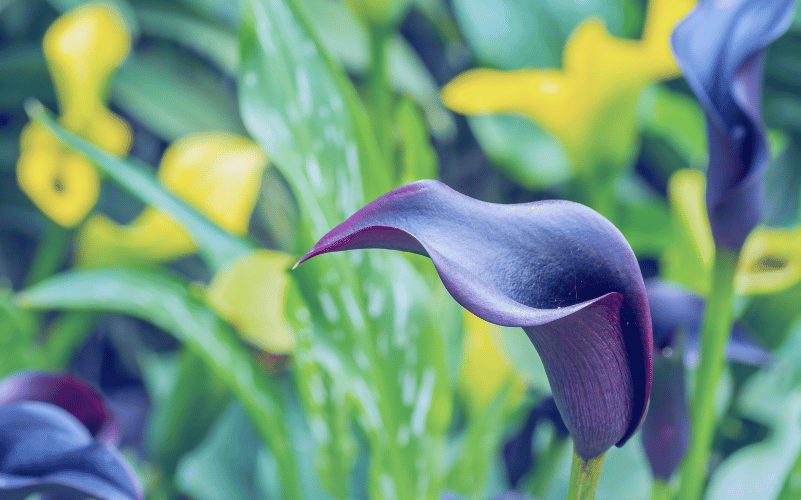
People from several cultures see lilies, such as the calla lily, as deeply meaningful. The Purple Calla Lily, with its royal color and beautiful shape, is often linked with purity, renewal, and transformation. The trumpet shape of the flower represents happiness and victory, making it an excellent option for joyful occasions.
The calla lily has inspired many painters and storytellers. Its beauty and elegance represent feminine charm and artistic inspiration. The Purple Calla Lily, with its rich colors, adds class to any setting, whether it is in a vase or as part of a larger arrangement.
Caring for Purple Calla Lilies:
Taking good care of Purple Calla Lilies is important for them to grow well and live a long time. Here are a few simple things you can do:
- Watering: Make sure to water your Purple Calla Lilies regularly, especially when they are dry. They prefer moisture but don’t give them too much to risk killing their roots. Put mulch around the base to keep the soil moist and prevent weeds. This helps keep your Purple Calla Lilies healthy.
- Fertilizing: Give your Purple Calla Lilies the right food for strong leaves and colorful flowers. Use a balanced, water-soluble fertilizer in the growing season. Follow the instructions to avoid using too much, as that can be harmful.
- Deadheading: Once the Purple Calla Lilies have finished flowering, remove the old flowers. This improves the plant’s appearance and provides more energy for future flowers.
- Winter Care: In cold places, protect your Purple Calla Lilies in winter. Put mulch around the bottom and trim the leaves after the first frost. If they’re in pots, move them to a safe spot away from the harsh winter weather.
- Container Gardening: For Purple Calla Lilies in pots, choose ones with holes, so water drains well. Use good potting mix and give the plant enough space to grow.
By following these maintenance instructions, individuals can enjoy the everlasting beauty of Purple Calla Lilies year after year.
How to Grow and Care for Calla Lily – Plants Indoors
Conclusion: The Enigmatic Purple Calla Lily: A Comprehensive Exploration
In conclusion, the Purple Calla Lily is a stunning flower, cherished for its special qualities and deep meanings. Whether in gardens, special events, or inspiring art, this beautiful flower makes a lasting impression. Its timeless beauty and cultural importance continue to charm and inspire flower lovers through the ages.
